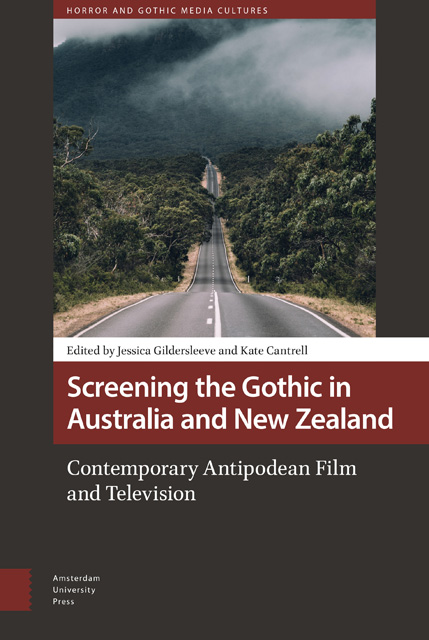7 - Gothic Explorations of Landscapes, Spaces, and Bodies in Jane Campion’s Top of the Lake and Top of the Lake: China Girl
Published online by Cambridge University Press: 24 November 2022
Summary
Abstract
Jane Campion's work has been described as sympathetic towards the Gothic in its aesthetic and thematic explorations. This chapter offers a comparative analysis of Campion's television miniseries, Top of the Lake (2013), and its sequel, Top of the Lake: China Girl (2017), in order to consider how landscapes, spaces, and bodies are ‘gothicized’ in the series to explore established themes of the genre including sexual violence, epistemological uncertainty, and contested family histories. It compares the geographies of the first and second seasons to consider the significance of regional particularities in contributing to the formation of a national understanding of the Gothic.
Keywords: New Zealand Gothic; Australian Gothic; genre; gender; commercial surrogacy; transnationalism
The New Zealand director, Jane Campion, has enjoyed an illustrious directorial and screenwriting career, in which her cinematic works have drawn on feminist gothic conventions to explore women's struggle within interlocking structures of masculine oppression. In particular, The Piano (1993) is notable in using ‘neo-Gothic aesthetics’ (Rueschmann) to challenge the sexualization of the ‘male imperial master’ (Hendershot 97) in Antipodean settings. This chapter takes up Campion's gothic explorations of bodies, spaces, and landscapes in her television miniseries, Top of the Lake (2013), and its sequel, Top of the Lake: China Girl (2017, hereafter China Girl). Campion collaborated on these miniseries with writer Gerard Lee, and directors Garth Davis and Ariel Kleiman for the first and second seasons respectively. The series was initially set in the fictional town of Laketop near Queenstown, New Zealand, and later relocated to Sydney, Australia, for its second season. As suggested by scholars such as Deb Verhoeven, Annabel Cooper, and Tessa Dwyer, Australia and New Zealand are key geographical and biographical reference points in Campion's career. Cooper notes that Campion's time spent outside of New Zealand has resulted in the cultivation of a ‘cinematic eye’ that views New Zealand from the perspective of an expatriate seduced by its ‘pastness’ (280), while Campion's representations of Australia are often ‘modern, dystopic, and urbanized’ (293).
- Type
- Chapter
- Information
- Screening the Gothic in Australia and New ZealandContemporary Antipodean Film and Television, pp. 141 - 158Publisher: Amsterdam University PressPrint publication year: 2022

